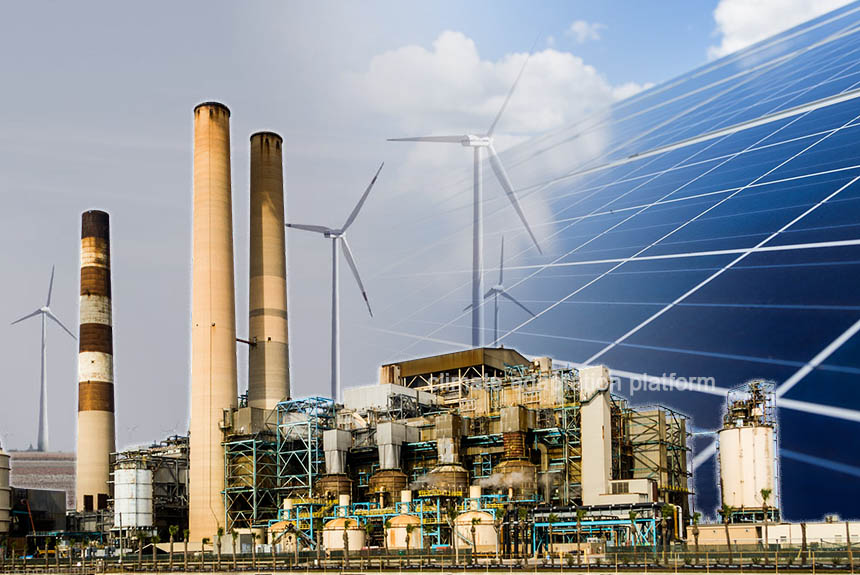The UK’s ambition to achieve net zero will involve decarbonising its energy-intensive clusters. The country’s industrial sector accounts for 16% of its total emissions. The industry is one of the most challenging sectors to decarbonise, but it offers the greatest emissions-reduction potential when achieved.
In its industrial decarbonisation strategy policy paper (UK Government, 2021a), the UK Government defines the six largest industrial clusters in the UK based on emissions levels. These clusters are Grangemouth, Teesside, Humberside, Merseyside, South Wales and Southampton.
All six clusters are developing detailed plans to reduce carbon emissions under and as part of the UK Research and Innovation’s (UKRI) Industrial Decarbonisation Challenge.
The Industrial Decarbonisation Challenge has a budget of £210 million covering the period from 2019 to 2024 to support the development of low-carbon technologies and infrastructure in the country’s six most significant industrial clusters. Funding will go to projects like carbon capture, storage, and hydrogen fuel switching to reduce carbon emissions from energy-intensive industries such as iron and steel, cement, refining, and chemicals.
Of the six clusters, Humber has the highest emissions, accounting for 5% of the UK’s total emissions from the area’s steel, chemical, and oil refining industries. Its industries generate £18 bn a year for the UK’s economy, 20% of which comes from energy-intensive sectors, supporting 360,000 jobs.
Humber refines a third of the country’s fuel and is also the country’s largest port complex. However, the region’s high emissions also present the greatest opportunity for carbon emissions reduction.
Humber aims to reach net zero by 2040. The Humber Industrial Cluster Plan provides a roadmap for how the region will achieve net zero.
“This will be achieved by validating technological pathways, data, literature, interviews, research, supply chains, skills development and defining areas for investment, along with engaging stakeholders and the general public – to produce a leading collaborative plan for the Humber Industrial Cluster” (The Plan, 2023).
According to ARUP, transforming the Humber, UK’s dirtiest industry sector, into a beacon for low-carbon and clean energy region involves seven mandates for action, which include technological intervention, efficiency measures, circular thinking, a focus on communities, skills and accelerating investment and collaboration.
1. To implement carbon capture and storage and greenhouse gas technologies at pace and scale
2. To implement low-carbon hydrogen at scale
3. To adopt all optimal electrification measures
4. To prioritise efficiency and circular economy measures
5. To generate social value through the industrial transition
6. To further develop Humber skills and supply chains
7. To drive investment and collaboration to deliver the net zero Humber of tomorrow
Arup notes that Humber’s goal to implement carbon capture and storage at scale, the area’s proximity to the UK’s largest collection of subsea carbon storage sites in the North Sea, makes it an ideal location for a CCS cluster and will result in deep emissions cuts from fossil fuel generation and carbon-intensive industrial processes like steel production.
The Economist article lists “green” projects operating in Humber, demonstrating that the area is keen to become a “green-energy estuary”. First off is the Siemens Gamesa factory in Hull, making 180 turbine blades for a wind farm off the coast of Aberdeenshire in Scotland. An offshore wind servicing in Grimbsy, Danish, a state-owned developer of the world’s biggest offshore wind farm, plans to produce hydrogen from natural gas at Saltend with ccs; the port of Immingham is being upgraded to allow hydrogen to be exported. The SSE, a British company in Keadby, has won approval to build one of the world’s first gas-fired power stations with carbon capture and storage. At Selby, Drax is trying to do the same with biomass. The article notes that these projects could bring more jobs and investment to the region.
Watch the video below to learn more about the Humber Industrial Cluster Plan
Sources:
Humber Industrial Cluster (2022). IDRIC. Retrieved from https://idric.org/stakeholders/humber-industrial-cluster/#:~:text=The%20Humber%20Industrial%20Cluster%20aims,the%20race%20to%20net%20zero.
Humber Industrial Cluster Plan. (2022, December 8). UK Research and Innovation. Retrieved from https://www.ukri.org/who-we-are/how-we-are-doing/research-outcomes-and-impact/innovate-uk/humber-industrial-cluster-plan/
The Largest CO2 Emitting Cluster in the UK. (2023). Retrieved from https://www.humberindustrialclusterplan.org/
How Britain’s dirtiest region hopes to become a hub for clean energy. (2024, March 26). The Economist. Retrieved from https://www.economist.com/britain/2024/03/26/how-britains-dirtiest-region-hopes-to-become-a-hub-for-clean-energy
Calvillo, C., Race, J., Chang, E., Turner, K., & Katris, A. (2022). Characterisation of UK industrial clusters and techno-economic cost assessment for carbon dioxide transport and storage implementation. International Journal of Greenhouse Gas Control, 119, 103695.
Anderson, A. (n.d.). Transforming the UK’s largest carbon emitting industrial cluster into a global catalyst for change. ARUP. Retrieved from https://www.arup.com/perspectives/transforming-the-uks-largest-carbon-emitting-industrial-cluster-into-a-global-catalyst-for-change



Leave a Reply